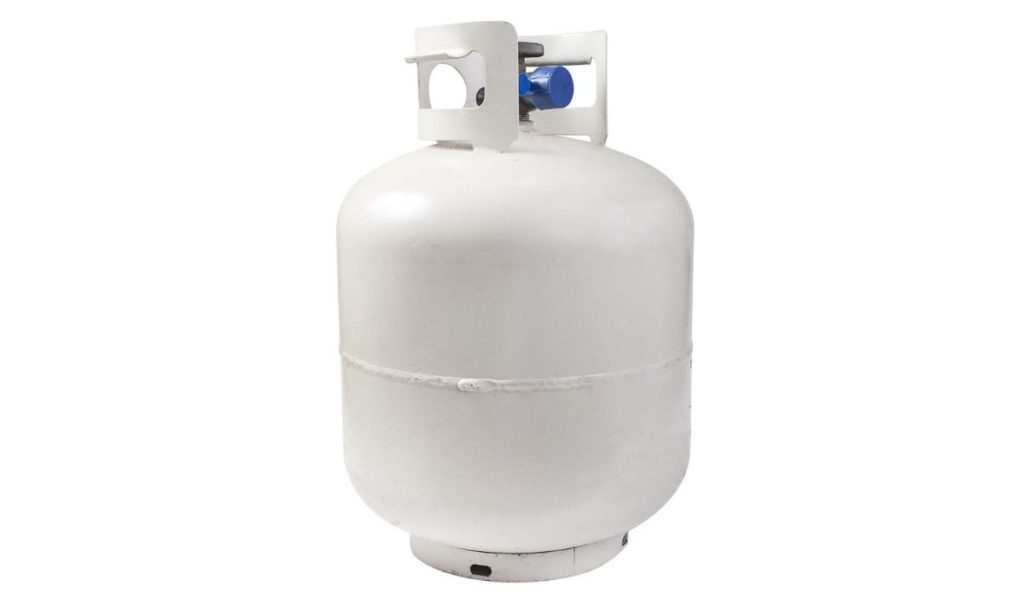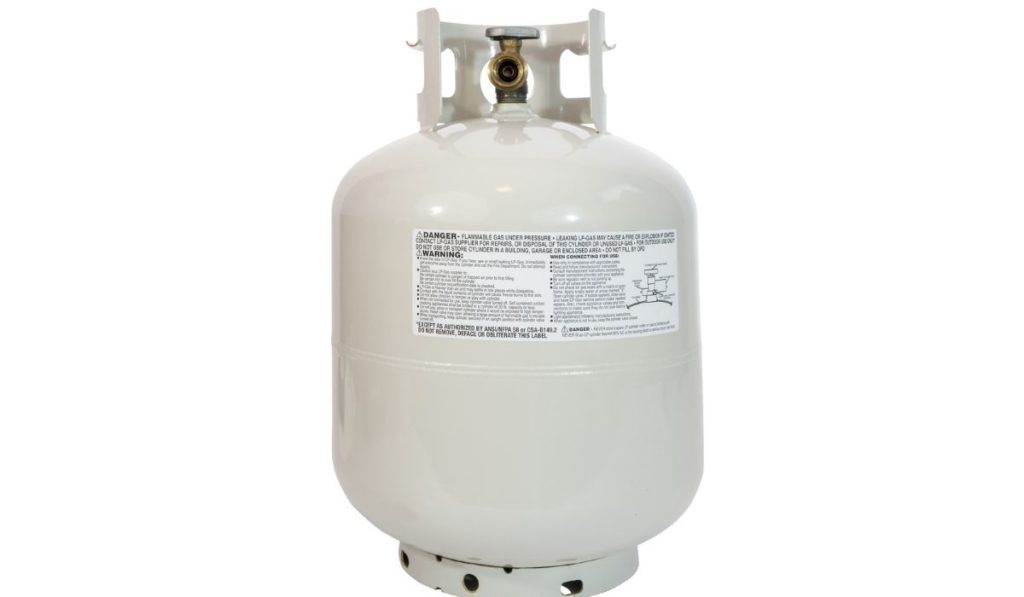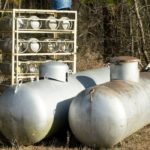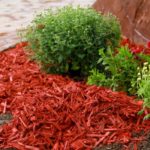If you use propane to power your home’s appliances, it’s vital to understand the various properties of this gas and how it’s stored. When it comes to weight, every propane tank has a “tare weight” stamped on the tank’s collar. The tare weight indicates the overall weight of the tank when it’s empty.
When empty, most 20-pound propane tanks have a tare weight of around 17 pounds, so a full 20-pound tank weighs around 37 pounds total. To determine how much propane is in your tank, subtract the tare weight from the total weight and divide by 4.25 pounds (the weight of a gallon of propane).
There are different propane tank sizes available, ranging from small propane tanks weighing between 5 and 20 pounds to standard propane tanks that weigh between 25 and 420 pounds. The tank’s exact weight is determined by the size of the propane tank used. Let’s take a closer look at the sizes and weights so that you can figure out how much your tank weighs.
Are Propane Tanks Heavy When They’re Completely Full?

When propane tanks are full, they are indeed quite heavy. The larger the tank, the heavier it is. When you get really large horizontal and vertical tanks, you’ll need assistance or machinery to move them.
Propane comes in liquid and gas forms. The propane in the tank is stored under pressure to maintain the boiling point below -45°F, at which point it transforms into liquid form and takes up less space in the tank.
How Much Do Standard Propane Tanks Weigh?
Standard propane tank sizes range from 20 to 100 pounds. A full 20-pound propane tank weighs approximately 35 pounds, while a full 30-pound propane tank weighs roughly 55 pounds, and a full 100-pound propane tank weighs around 150 pounds. These propane tanks are heaviest when full.
For standard-sized tanks, add the tare weight and the weight of the propane tank to determine the total weight of the full tank. For example, most 20-pound tanks have a tare weight, or TW, of approximately 17 pounds.
This means that a full 20-pound propane tank weighs approximately 37 pounds.
How to Tell if Your Propane Tank Is Full
In the section, we’ll look at three ways you can tell if your propane tank is full.
1. Use Warm Water
Pour warm water over the tank, then use your hand to feel the outside of the tank and check its temperature. The water will warm the tank’s body, with the liquid propane inside keeping the tank cool simultaneously.
Feel the tank’s body and take note of the spot the temperature changes from warm to cool. This spot is the level the propane is currently at. For instance, if the cool spot is halfway around the tank, this means the tank is approximately half full.
2. Use a Gauge
Using a gauge shows you more accurate readings than using warm water. This gauge works just like the fuel gauge in a vehicle. The arrow indicates how much fuel is left in the tank.
Some propane tanks have built-in gauges, but you can purchase one separately if your tank doesn’t come with a built-in gauge. One good option is the DozyAnt Tank Gauge (on Amazon).
We advise tightening all the connections as much as possible to avoid any leaks.
3. Use a Scale
Using a scale is the most accurate method of the three. You could use a portable hanging scale, like the H Series Digital Hanging Scale (on Amazon), or place the tank on your bathroom scale. You should find the tare weight indicated on the collar of the tank, and a gallon of liquid propane weighs roughly 4.25 pounds.
Subtract the tare weight from the total weight after weighing your tank. Then divide that number by 4.25. You could use a hanging propane scale instead if you don’t want to do the math.
Is Propane Heavier Than Natural Gas?

Yes, propane weighs more than natural gas. Propane weighs more than air, whereas natural gas weighs less. The significance of knowing the answer to this question is that it helps you know what to expect and how to react in the unlikely event of a propane leak indoors.
If there is a leak indoors, natural gas will be concentrated higher at the ceiling level, whereas propane will be concentrated on the floor level.
Conclusion
If you live in an area with a really cold climate, you may need to observe additional safety precautions. The reason is that if you place a propane tank outside in cold temperatures and then place it in a hot space like a garage or basement, the gas will start expanding as the tank gets warm. When the temperature gets too high, the tank’s relief valve will release a small amount of gas.
Following the necessary safety precautions and understanding how propane behaves will help you steer clear of any potential issues.








